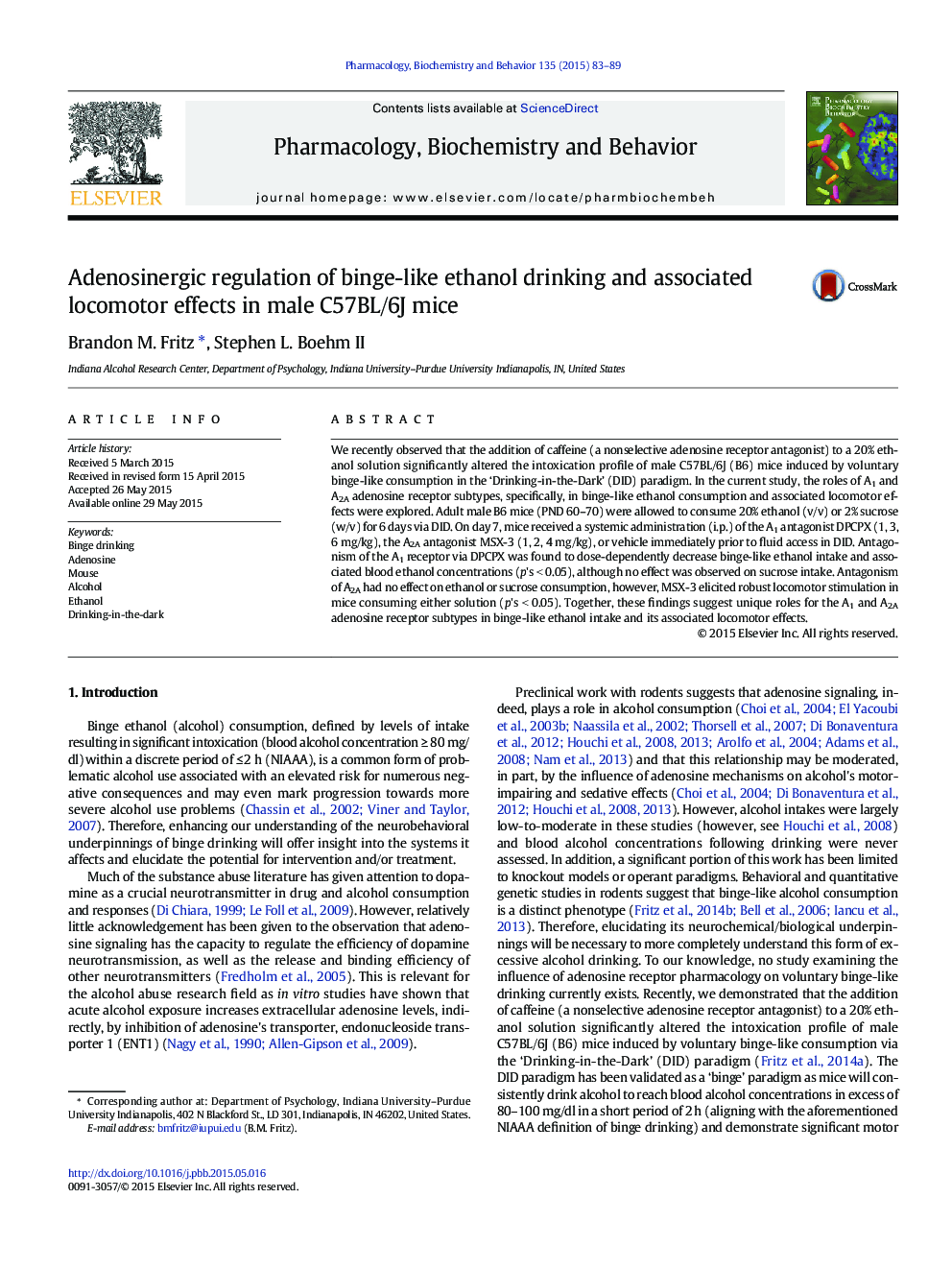| Article ID | Journal | Published Year | Pages | File Type |
|---|---|---|---|---|
| 8350465 | Pharmacology Biochemistry and Behavior | 2015 | 7 Pages |
Abstract
We recently observed that the addition of caffeine (a nonselective adenosine receptor antagonist) to a 20% ethanol solution significantly altered the intoxication profile of male C57BL/6J (B6) mice induced by voluntary binge-like consumption in the 'Drinking-in-the-Dark' (DID) paradigm. In the current study, the roles of A1 and A2A adenosine receptor subtypes, specifically, in binge-like ethanol consumption and associated locomotor effects were explored. Adult male B6 mice (PND 60-70) were allowed to consume 20% ethanol (v/v) or 2% sucrose (w/v) for 6 days via DID. On day 7, mice received a systemic administration (i.p.) of the A1 antagonist DPCPX (1, 3, 6 mg/kg), the A2A antagonist MSX-3 (1, 2, 4 mg/kg), or vehicle immediately prior to fluid access in DID. Antagonism of the A1 receptor via DPCPX was found to dose-dependently decrease binge-like ethanol intake and associated blood ethanol concentrations (p's < 0.05), although no effect was observed on sucrose intake. Antagonism of A2A had no effect on ethanol or sucrose consumption, however, MSX-3 elicited robust locomotor stimulation in mice consuming either solution (p's < 0.05). Together, these findings suggest unique roles for the A1 and A2A adenosine receptor subtypes in binge-like ethanol intake and its associated locomotor effects.
Related Topics
Life Sciences
Biochemistry, Genetics and Molecular Biology
Biochemistry
Authors
Brandon M. Fritz, Stephen L. II,
